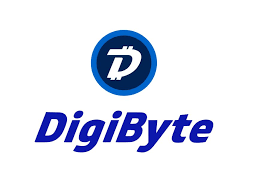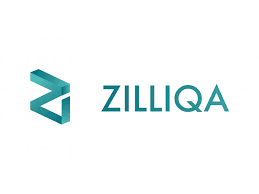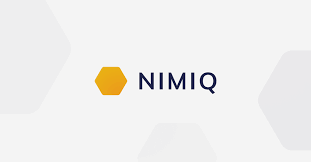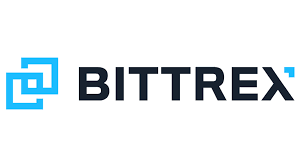Digibyte, with its fast transaction speeds, low fees, and user-friendly interface, has the potential to be profitable for miners. Its browser-based accessibility makes it easy for anyone to participate in mining. Additionally, Digibyte’s collaborative approach, partnerships, and ongoing development efforts contribute to its growth and potential profitability. With the right hardware and efficient mining operations, miners can maximize their earnings. It’s important to consider factors like its mining algorithm, difficulty level, and electricity costs when assessing cost-effectiveness. To make the concept of profitability easier, this article will examine the factors that affect mining profitability, calculate potential earnings, and discuss strategies to maximize your returns. So keep reading to understand the digibyte mining and its benefits properly.

The concept of mining profitability
Before taking a look at digibyte mining, let’s take a peek at the basic concept of mining profitability. When it comes to mining profitability, it’s all about weighing the costs and potential rewards. Factors like the cryptocurrency’s mining algorithm, difficulty level, hardware requirements, and electricity costs play a crucial role. Mining viability can fluctuate based on market conditions and competition. It’s important to consider these factors and use mining calculators to estimate potential earnings. Additionally, staying updated on the latest trends and developments in the cryptocurrency space can help make informed decisions. So, before diving into mining, it’s essential to carefully assess the concept of mining profitability.
Factors affecting Digibyte mining profitability
The following are the key elements that influence Digibyte mining profitability and provide insights for miners to optimize their operations.
- Network difficulty
One of the primary factors affecting the coin mining cost-effectiveness is network difficulty. Network difficulty refers to the complexity of the mathematical problems that miners must solve to validate transactions and add them to the blockchain. As more miners join the network, the difficulty level increases, making it harder to mine new blocks. Higher network difficulty leads to a reduction in mining rewards, potentially impacting profitability.
- Electricity costs
Mining cryptocurrencies requires a substantial amount of computational power, which translates into significant electricity consumption. Electricity costs can have a substantial impact on mining profitability, especially if the cost per kilowatt-hour (kWh) is high. Miners should carefully consider their energy expenses and explore cost-effective solutions such as renewable energy sources or mining in regions with low electricity costs to maximize cost-effectiveness.
- Mining pool selection
Joining a mining pool is a common practice among miners. Mining pools allow participants to combine their computational resources and increase their chances of mining new blocks collectively. However, mining pools charge a fee or deduct a percentage of the mining rewards, which can affect profitability. Miners should research and choose a reputable mining pool with a reasonable fee structure to strike a balance between collective mining power and profitability.
- Coin price and market conditions
The value of Digibyte in the cryptocurrency market has a direct impact on mining profitability. A higher Digibyte price translates into higher mining rewards when converted to fiat currency. However, cryptocurrency prices are highly volatile, and market conditions can fluctuate significantly. Miners need to monitor market trends and consider potential risks and rewards associated with mining.
- Maintenance and operating costs
Mining operations require ongoing maintenance, including hardware maintenance, cooling systems, and internet connectivity. These costs can impact mining profitability. Miners should factor in these expenses when calculating their potential returns. Regular maintenance and efficient operation can help mitigate downtime and maximize cost-effectiveness.
Recent trends in Digibyte Mining
Recent trends in Digibyte mining profitability have been influenced by factors such as cryptocurrency market volatility, changes in mining difficulty, and overall network participation. Staying updated on these trends and potential future changes is crucial, as they can impact mining viability. Additionally, Digibyte’s collaborative approach, partnerships, and ongoing development efforts may introduce new features or improvements that could affect mining profitability in the future.
By monitoring these developments and keeping an eye on the market, miners can make informed decisions about their Digibyte mining operations.
Strategies for maximizing Digibyte mining profitability
To maximize Digibyte mining profitability, there are a few strategies you can consider. First, invest in efficient mining hardware specifically designed for Digibyte. This will help increase your mining hash rate and overall efficiency. Second, join a Digibyte mining pool to increase your chances of earning consistent rewards. By pooling resources with other miners, you can collectively solve blocks and share the rewards based on your contribution. Third, stay updated on changes in its mining ecosystem, including mining difficulty and network participation. This will help you adjust your mining strategy accordingly.
Fourth, manage your operating costs by optimizing your mining setup for energy efficiency. Choose energy-efficient hardware and consider utilizing renewable energy sources or taking advantage of lower electricity rates during off-peak hours. Finally, diversify your mining efforts by considering mining multiple cryptocurrencies to mitigate risks and take advantage of potential productivity in different markets. Remember to continuously evaluate and adjust your strategies to adapt to the evolving landscape of Digibyte mining.
You can also find these articles helpful
History of Digibyte
Buying Digibyte – full guide
How Can You Start Mining Cryptocurrencies (Including Bitcoin)











